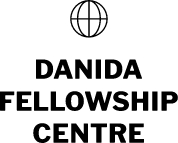Frequently Asked Questions
Here you find answers to questions about the South-driven development research projects
Q: What is the difference between South-driven development research projects and North-driven development research projects?
A: For the South-driven development research projects the traditional approach is reversed, meaning that in North-driven projects the Danish research institutions define the projects and select their partners. Instead, the institutions in the South are taking the lead in developing the concept of the research project, identifying relevant Danish research partners, and managing the project.
Q: Which countries are included in the South-driven development research projects?
A: Nepal, Ghana, and Tanzania, Ghana are currently included.
Q: Can I apply for an FFU grant as an individual researcher or PhD?
A: No, applications can only be submitted by a research institution, e.g. a governmental institution, private-sector enterprise or private organization in Nepal, Ghana, or Tanzania. The main applicant must be attached to the institution which will be responsible for the approved project. The main applicant researcher must at the time of submitting the application hold a PhD or equivalent qualifications, documented clearly in the CV. The main applicant will have to find a North partner at a research institution in Denmark.
Q: How can I apply for a grant for a South-driven development research project?
A: The Call for Phase 1 applications is announced once a year. The Call, application form, and application guide are available at DFC’s website and at the Danish embassies’ websites in the partner countries which are included in the research cooperation programme.
Q: What are the steps in the application process of a South-driven development research project?
A: The entire application process takes approx. one year. It is a two-phase process consisting of a Phase 1 application (concept note phase) and a Phase 2 application (project proposal phase). The Phase 1 application is prepared by the applicant researchers in the partner country, while the Phase 2 application is prepared after the selection of Danish research partners. The latter is a joint application. Detailed description of the application process is available on DFC’s website.
Q: What is the procedure for establishing a research partnership with a Danish research institution?
A: The process of selecting of Danish research partners will be initiated after the Phase 1 applications have been shortlisted and it is based on the expressions of interest from Danish research institutions and meetings in Denmark or in the partner country. The applicant institution is responsible for selecting its Danish research partner.
Q: How can I find a Danish research partner?
A: Already in Phase 1 for the Call 2016 (the concent note stage), the Danish research partners should be selected. The applicants could identify relevant Danish research partners by using their network, BSU contacts, international scientific databases such as http://scholar.google.dk/, http://www.scirus.com/, and/or the Danish research database http://www.forskningsdatabasen.dk/. Inspiration can also be found by searching the Danida Research Portal, link http://drp.dfcentre.com/. An overview of the universities in Denmark can be accessed by link https://dkuni.dk/?lang=en. Here you can find links to each of the eight universities in Denmark, and possibilities of searching among their researchers according to subject. It is equally possible to get guidance from the Research Unit at DFC as to the identification of possible/relevant Danish research environments in the fields of research. DFC also facilitates the Research Collaboration Marketplace at DFC’s website.
